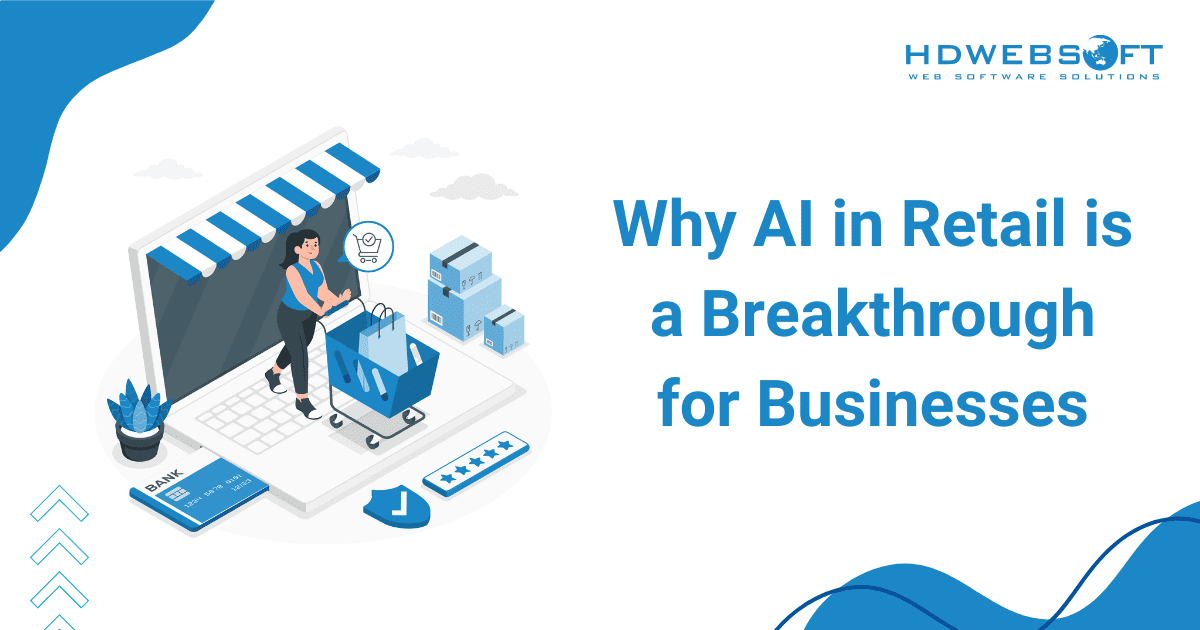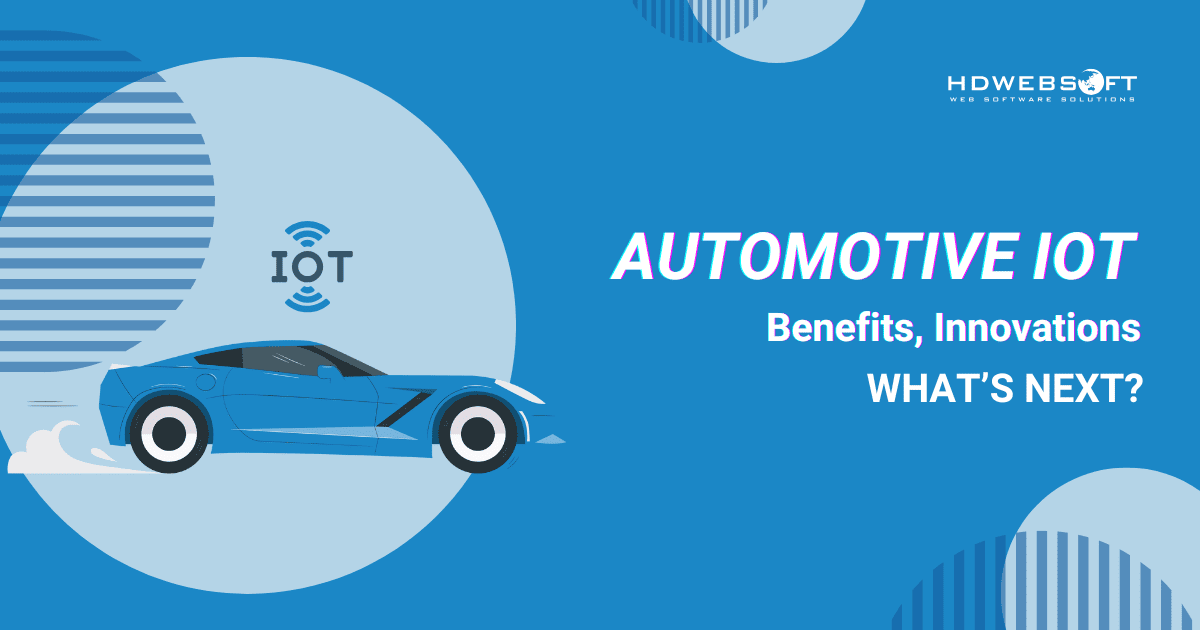
Automotive IoT: Benefits, Innovations, and What’s Next
Automotive IoT is transforming the way vehicles are designed, built, and operated, ushering in a new era of smart mobility. By embedding advanced technologies into vehicles and infrastructure, IoT for automotive enables seamless communication between cars, drivers, the environment, and even other vehicles. This powerful network of interconnected components is redefining convenience and safety for drivers. Meanwhile, it also lays the groundwork for fully autonomous transportation systems.
In this blog, we’ll break down what IoT for the automotive industry is and how it functions in modern vehicles. We’ll also explore its key advantages, its role in driving innovation and sustainability, and the emerging trends shaping its future. Whether you’re in the industry or simply interested in smart mobility, this guide provides a clear overview of the topic.
What is Automotive IoT?
Simply put, automotive IoT refers to the integration of Internet of Things technology into vehicles and transportation systems. The goal is to facilitate real-time data exchange, automation, and informed decision-making.
By connecting vehicles to the internet, other devices, and infrastructure, IoT for automotive enhances driving experiences through various features. Namely, they are predictive maintenance, remote diagnostics, fleet tracking, and advanced driver-assistance systems (ADAS). These smart technologies rely on sensors, software, and cloud computing to process and act on data, often without human intervention.
The Market Overview of IoT for Automotive
This growing ecosystem of connected vehicles is a key driver of innovation in the automotive sector. In recent years, the IoT market for the automotive industry has expanded rapidly. It’s driven by rising consumer demand for safer, more efficient, and more connected driving experiences.
According to a recent statistic, the global automotive IoT market is projected to reach 1094.12 billion by 2034, growing at a CAGR of 21.71% during the forecast period. This surge reflects advancements in connectivity and cloud infrastructure, as well as strong investments from automakers and tech companies. These efforts aim to help them stay competitive in an increasingly data-driven landscape.
From electric vehicles to autonomous driving prototypes, IoT for automotive plays a foundational role in the next generation of mobility. As governments push for smarter transportation networks and stricter emissions standards, connected technologies are becoming essential, not optional.
In short, IoT automotive is no longer just an emerging trend. It is a transformative force that’s reshaping the way we think about mobility, efficiency, and vehicle intelligence.
HDWEBSOFT’s Case Study: Automatic Parking System.
Advantages of Using IoT in the Automotive Industry
The adoption of IoT for automotive is unlocking a wide range of benefits for manufacturers, drivers, and the entire transportation ecosystem. Below are some of the key advantages driving this transformation.
Smarter Manufacturing Operations
Firstly, automotive IoT is revolutionizing smart production by providing manufacturers with real-time visibility into every aspect of the assembly line. With connected machines, sensors, and predictive analytics, manufacturers can monitor equipment performance, detect anomalies, and prevent costly downtime.
Thus, this creates a more agile and efficient production environment where issues are resolved before they disrupt workflows. It also enables greater customization and scalability in vehicle production, meeting market demands faster than ever.
Personalized and Connected Driving Experience

Today’s drivers expect more than just transportation; they want intelligent, connected experiences. IoT for automotive enables in-vehicle personalization through features like voice-activated controls, adaptive infotainment systems, and real-time navigation. Hence, these smart systems learn driver preferences over time, offering everything from tailored media recommendations to automatic seat adjustments.
And the result? A smoother, more enjoyable journey that feels uniquely tailored to the individual behind the wheel.
Making Roads Safer for Everyone
Safety is one of the most significant benefits of automotive IoT. By enabling vehicle-to-vehicle (V2V) and vehicle-to-infrastructure (V2I) communication, IoT systems help prevent accidents before they happen.
Nowadays, cars can share data about traffic conditions, hazards, or sudden braking, allowing nearby vehicles to react instantly. Combined with driver-assistance features like lane-keeping and collision warnings, IoT creates a safer environment for both drivers and pedestrians.
On-the-Go Access to Vehicle Insights
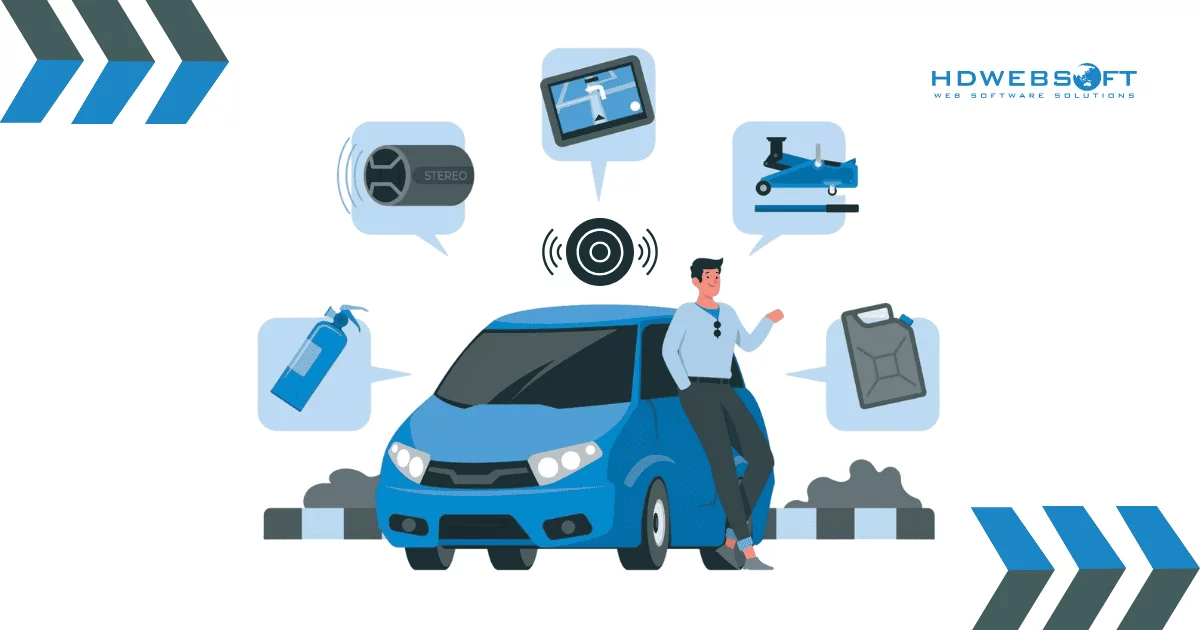
Thanks to IoT-enabled connectivity, drivers and fleet operators can remotely access critical vehicle data from anywhere. Through mobile apps or dashboards, users can track fuel efficiency, tire pressure, battery health, and even location in real time. Consequently, this level of transparency not only empowers better decision-making but also strengthens security and theft prevention.
Smarter Maintenance and Repairs
Gone are the days of relying solely on routine service schedules. With the technology, vehicles can detect potential issues early and alert the driver before a breakdown occurs.
Predictive maintenance powered by real-time diagnostics reduces repair costs, prevents sudden failures, and extends the overall lifespan of the vehicle. It’s safe to say that automotive IoT is making car ownership more convenient and cost-effective.
How Automotive IoT Is Driving Innovation in the Industry
IoT automotive is no longer just about connecting vehicles. It’s about reimagining how the entire automotive ecosystem operates. Let’s explore some of the key areas where automotive IoT is fueling innovation.
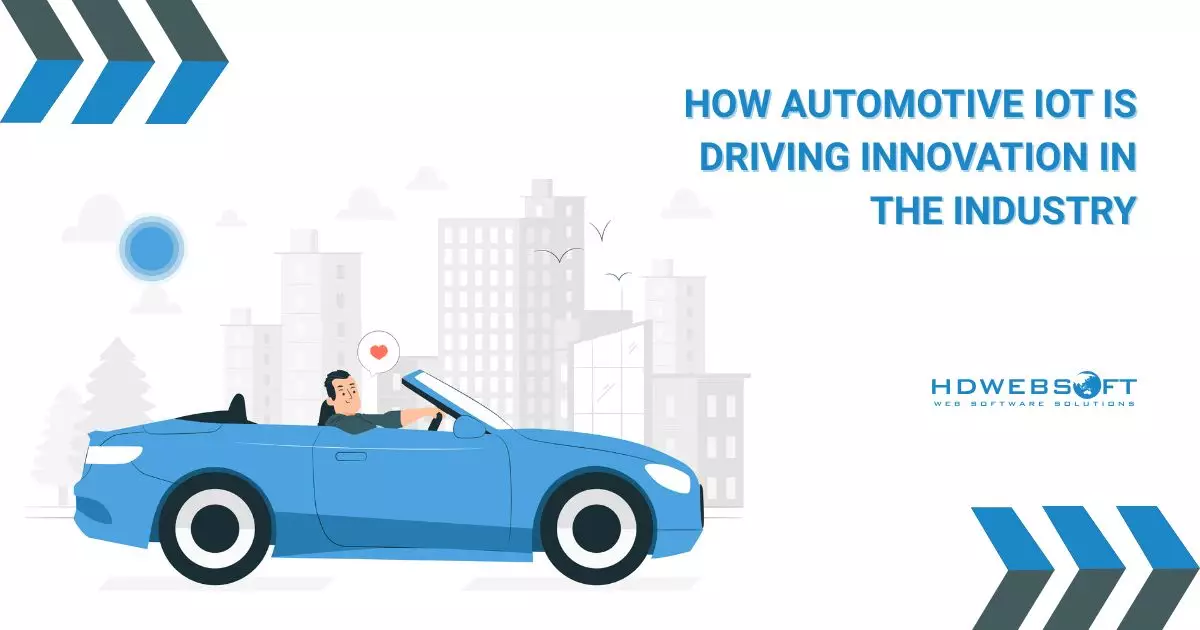
Fleet Operations and Telematics
In recent years, modern fleet management has become increasingly efficient thanks to IoT-powered telematics. With the help of connected sensors and GPS systems, companies can track vehicle locations, monitor driver behavior, optimize fuel usage, and streamline routes in real-time.
As a result, these insights reduce operational costs, enhance productivity, and improve overall safety. Ultimately, IoT has become a game-changer for logistics and transportation businesses.
Connected Vehicles on the Rise
These days, connected cars are becoming central to how drivers interact with their vehicles and the world around them. With real-time communication between vehicles, infrastructure, and cloud platforms, automotive IoT connected cars can share vital information. This enables dynamic traffic updates, hazard alerts, and more efficient navigation.
In all, enhanced situational awareness leads to safer and smarter journeys.
Semi-Autonomous Mobility
As a matter of fact, semi-autonomous vehicles rely heavily on IoT for automotive to function safely and effectively. Systems such as adaptive cruise control, lane-keeping assist, and emergency braking operate through real-time sensor data and onboard intelligence. While we’re not fully autonomous yet, these features mark a major step toward safer and more automated driving experiences.
Predictive Maintenance
Another powerful outcome of IoT integration calls for predictive maintenance. By constantly analyzing vehicle performance data, IoT systems can forecast potential failures and alert drivers before breakdowns occur. This not only prevents unexpected repairs but also reduces maintenance costs and improves vehicle reliability over time.
In-Car Digital Experience
In-vehicle entertainment is no longer just about radio and Bluetooth. Today’s infotainment systems are powered by automotive IoT. They offer drivers and passengers access to real-time navigation, music streaming, voice assistants, and even app integration. These systems evolve based on user preferences, delivering a highly personalized and seamless digital experience inside the car.
Automotive IoT and Sustainability
As the world moves toward greener, more responsible transportation solutions, IoT automotive is emerging as a critical enabler of sustainability. By connecting vehicles, infrastructure, and cloud systems, IoT technologies support a range of eco-friendly initiatives.
Reducing Emissions
One major way IoT contributes to sustainability is by optimizing fuel consumption and cutting down on idle time. Specifically, in both personal and commercial vehicles, connected systems continuously monitor driving behavior, traffic conditions, and engine performance in real-time. This data allows for route optimization and traffic avoidance, helping to reduce unnecessary fuel consumption and minimize carbon emissions.
Waste Reduction
IoT-enabled predictive maintenance not only saves time and money but also enhances operational efficiency. Additionally, automotive IoT fully supports environmental goals.
By detecting wear and potential failures early, these systems help prevent major breakdowns. They also reduce the need for premature parts replacement. As a result, materials are conserved, and vehicles operate more efficiently over a longer lifespan.
Electric Vehicle Revolution
Furthermore, the technology plays a vital role in the rise of electric and hybrid vehicles. From battery health monitoring to connected charging stations, IoT tools give EV drivers more control over their energy consumption. Simultaneously, cities and utility providers can utilize IoT data to enhance charging infrastructure and more sustainably balance grid loads.
Greener Transportation Systems
Beyond individual vehicles, IoT for automotive enables smarter traffic systems. For example, connected traffic lights and infrastructure can communicate with vehicles to smooth out traffic flow, reduce stop-and-go driving, and lower city-wide emissions. These innovations support cleaner, more efficient urban mobility on a system-wide level.
Future Trends in Automotive IoT
As technology evolves, automotive IoT is poised to play an even greater role in redefining mobility, safety, and user experience. The next wave of innovation will be driven by the current advanced technologies. Below are some of the most promising trends shaping the future of the automotive IoT landscape.
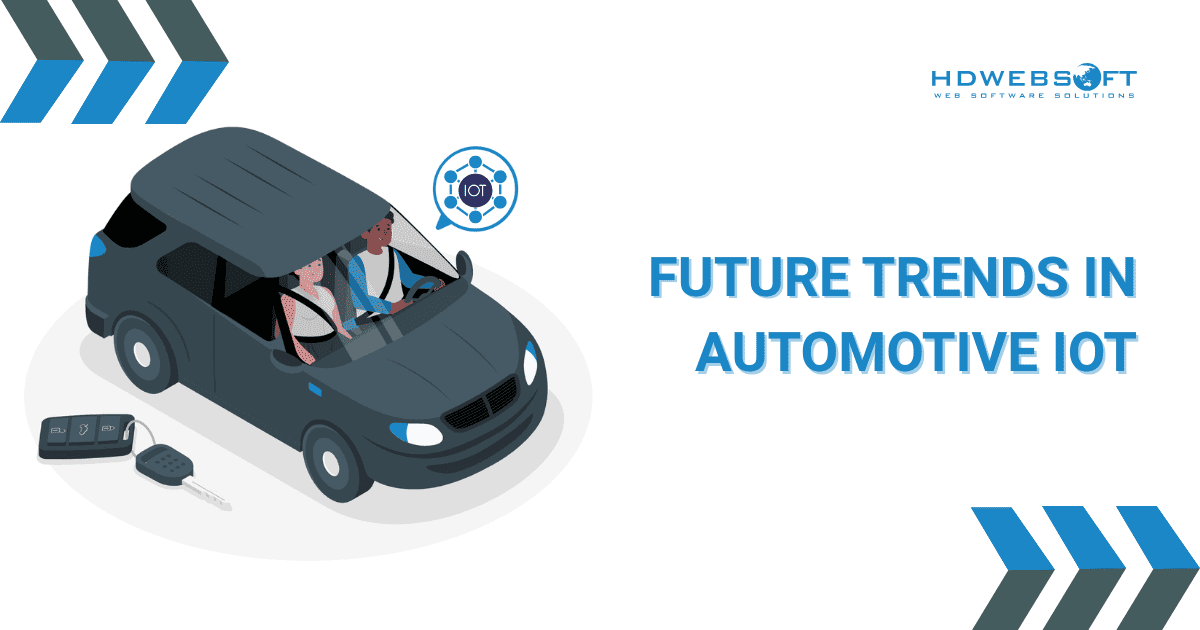
5G-Enabled Vehicle Communication
One of the biggest enablers of next-gen IoT automotive is 5G. With ultra-low latency and high-speed connectivity, 5G will allow vehicles to communicate faster and more reliably with V2V, infrastructure (V2I), and cloud services.
Therefore, this advancement will improve everything from autonomous decision-making to live traffic data streaming. Ultimately, it creates safer and more responsive driving environments.
Edge Computing for Faster Processing
As vehicles generate more data than ever before, relying solely on cloud processing can cause delays. Edge computing solves this by processing data closer to the source, directly within the vehicle or nearby infrastructure. Expectantly, automotive IoT results in quicker decision-making, which is essential for safety-critical tasks like collision avoidance and automated braking.
AI-Powered Vehicle Intelligence
Artificial Intelligence is becoming deeply embedded in connected vehicles. From learning driver behavior to optimizing energy usage, AI algorithms can interpret vast amounts of sensor data in real time. One notable advancement is AI-powered image analysis, which enables vehicles to recognize road signs, detect pedestrians, and assess surrounding environments with high accuracy.
As IoT for automotive and AI continue to merge, we’ll see cars that can self-learn and self-diagnose. They may even anticipate user needs before commands are given.
Cybersecurity as a Core Requirement
With increased connectivity comes heightened security risks. A major trend is the development of advanced cybersecurity solutions tailored for IoT-enabled vehicles. Future systems will incorporate built-in encryption and intrusion detection capabilities. Plus, they will support over-the-air (OTA) security patches to safeguard data and prevent malicious access to critical systems.
Integration with Smart Cities
Moreover, automotive IoT won’t evolve in isolation. It will increasingly integrate with smart city infrastructure. Vehicles will become part of a broader urban ecosystem, sharing data with traffic lights, emergency services, and city planners. Accordingly, this collaboration will help reduce congestion, improve emergency response times, and support sustainable urban development.
Read more: Top 8 Digital Transformation Technologies in 2025.
Conclusion
The impact of automotive IoT is already visible across every layer of the industry. From connected cars to semi-autonomous features and smart city integration, IoT technology is fueling innovation across the automotive landscape. As these trends continue to evolve, embracing the IoT will be essential for companies seeking to remain competitive in the modern mobility ecosystem.
At HDWEBSOFT, we understand the critical role that AI and IoT play in driving the automotive industry forward. Our AI development services are designed to help businesses build intelligent, data-driven solutions that integrate seamlessly with automotive systems. We’re ready to support your digital transformation with scalable, future-ready technologies.







